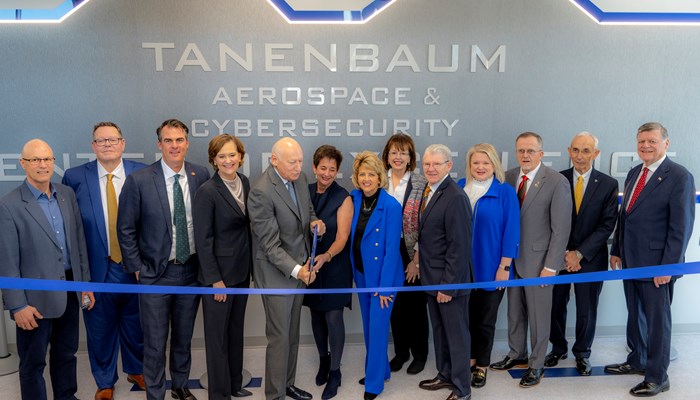How a Degree Can Launch Your Health Care Career Published August 28, 2018
 No matter if you just entered the workforce or are thinking about going back to school, a health care degree can help you launch a new and exciting career. Luckily, getting a job in the health care industry doesn’t necessarily mean you must get a four-year degree or spend years in medical school. In fact, there are many health care careers that only require a two-year associate degree to get started.
No matter if you just entered the workforce or are thinking about going back to school, a health care degree can help you launch a new and exciting career. Luckily, getting a job in the health care industry doesn’t necessarily mean you must get a four-year degree or spend years in medical school. In fact, there are many health care careers that only require a two-year associate degree to get started.
At Rose State College, we offer several associate degree programs designed to allow students entry into the rewarding health care industry. We focus on preparing future medical providers by equipping them with the tools needed to meet patient needs while linking standards of care with the latest technology.
Why a Medical Degree?
Did you know that the number of health care careers in the United States is expected to increase by 23 percent, or an estimated 974,000 new jobs in the next decade? The medical field is constantly growing, which means it is in constant need of qualified, well-educated professionals. In fact, the health care industry is one of the fastest growing industries in the United States thanks to an increase in the number of insured patients, the rising age of the Baby Boomer generation, and technological advancements in medicine.
The average salary of graduates with an associate degree is around $41,000. However, according to the Bureau of Labor Statistics (BLS), several medical fields requiring only an associate degree are growing at above-average rates and offering above-average pay. At two-year colleges like Rose State, students can earn a medical degree with above-average earning potential at a fraction of the cost and time required to obtain a degree from a university or medical institution.
Health Care Degrees at Rose State
At Rose State, we offer several medical degree programs through our Division of Health Sciences. All programs are fully accredited—meaning graduates are able to complete state- and national-level credentialing exams to become certified in their respective fields and begin their careers. While most Rose State health care graduates find employment in hospitals, dental offices, and home health agencies, specialist clinics also provide numerous employment opportunities.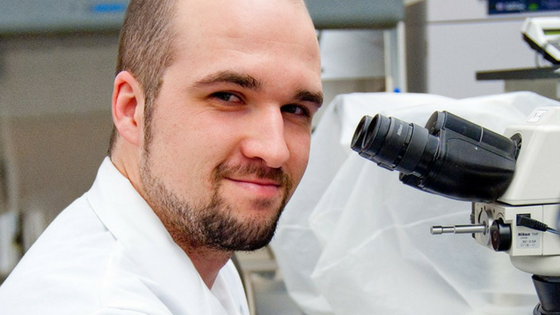
Medical Laboratory Technology and Phlebotomy
The Medical Laboratory Technology and Phlebotomy Program (MLT) at Rose State prepares students in the field of laboratory medicine. “By integrating didactic and clinical aspects of training, we help students become well-rounded laboratory professionals who are ready to enter the field,” Program Director Carlo Ledesma says. “The laboratory skills they learn at Rose State prepare students to get the techniques prior to clinical rotation, and the clinical rotation puts an application to their didactic knowledge.”
Students can enroll in the MLT program in either the fall or spring and will take 31 credits hours in general education, psychology, and science as well as 42 credit hours of MLT program courses. The program can either be completed in one year on a full-time basis or within two years on a part-time basis. Courses are geared toward teaching students how to conduct lab tests that aid physicians in their diagnosis, management, and treatment of diseases.
Certification
Medical laboratory technicians and phlebotomists must attend an accredited program in order to qualify for the national certification exams. Rose State’s MLT program is a National Accrediting Agency for Clinical Laboratory (NAACLS) accredited program. Upon completion of the program, MLT students must complete the national certifying exam offered by the American Society of Clinical Pathologists (ASCP BOC).
Career Opportunities
“There are a variety of employment opportunities available for MLT and phlebotomy students,” Ledesma says. “Phlebotomy students can work in a plasma center, clinical laboratories, and blood centers to collect blood. MLT graduates can work in a variety of labs including hospital clinical laboratories, reference labs, and research labs. They can also work in sales for pharmaceuticals companies. Some of our graduates have used the skills gained in the MLT program to pursue further education and careers in forensic science, and some went on to be medical doctors.”
The BLS expects the job market for medical laboratory technicians and phlebotomists to remain strong, with expected employment growth of approximately 13 percent and 25 percent respectively between 2016 and 2026. In 2017, the median salary for medical laboratory technicians in the U.S. was $51,770 and $33,670 for phlebotomists.
“Rose State takes pride in our program and the outcomes of our program. We have had a three-year average of 100 percent board pass rate and employment,” Ledesma says. For more information about the MLT/Phlebotomy program, contact MLT@rose.edu.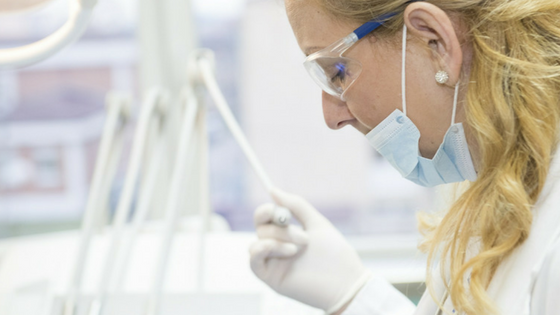
Dental Hygiene
Rose State’s Dental Hygiene Program provides students with the knowledge of dental hygiene theory, research, and practice while also preparing them to perform clinical techniques and procedures. The program accepts 12 students each year and is accredited by the Commission on Dental Accreditation of the American Dental Association.
“There are 39 hours of prerequisite courses needed before applying to the program,” Kara Hodges, Director of Dental Programs at Rose State, says. “Science courses must have been taken within the last seven years and students must have received a grade of ‘C’ or higher. Students must also submit an ACT score that was taken within the last 10 years.”
Once admitted, students will complete courses in biological, behavioral, and social science during their first year of study followed by two years of professional courses designed to coordinate classroom lectures with clinical and laboratory experiences.
“There is a low faculty/student ratio in both of our dental programs,” Hodges says. “This gives an opportunity for one-on-one instruction for our students. Many hours are spent not only in the classroom setting but in pre-clinicals, rotations, and in the clinic with patients.”
Certification
To obtain a dental hygienist license, students must graduate from an accredited program, take the National Board Dental Hygiene Examination, and pass a state or regional clinical licensure exam.
“Graduation from the Rose State Dental Hygiene Program makes students eligible to take required licensure exams before beginning employment,” Hodges says. “Graduates of this program are also eligible for certification in all advanced procedures legal for dental hygienists in the state of Oklahoma.”
Career Opportunities
“Career opportunities include employment in private dental practices, clinics, school programs, public health programs, institutional care, hospitals, industrial health, and the armed forces,” Hodges says. “Opportunities in business and education may also be available. However, additional education may be required.”
Dental hygienists can perform a wide range of services for dental patients, including:
- patient screening procedures, such as reviewing health and dental history and taking blood pressure, pulse, and temperature
- taking and developing dental radiographs
- removing calculus and plaque from teeth
- applying preventive materials to teeth
- teaching patients appropriate oral hygiene techniques
- counseling patients regarding proper nutrition and its impact on oral health
- making impressions of patients' teeth for study casts
A majority of the more than 200,000 active dental hygienists in the U.S. are employed by general dentists, but dental specialists, such as periodontists or pediatric dentists, also employ dental hygienists. According to the BLS, the median salary for dental hygienists in the U.S. is $74,070 or $45.61 per hour. In Oklahoma, hygienists generally earn between $35 and $39 an hour. In terms of future job opportunities, the BLS expects the number of hygienist jobs to increase by 20 percent, or 40,900 jobs, by 2026.
For more information about the Dental Hygiene program, contact Kara Hodges at (405) 736-0263 or khodges@rose.edu. 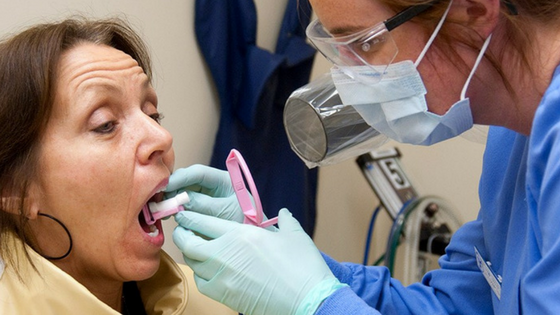
Dental Assisting
“The Dental Assisting Program at Rose State helps to prepare students to graduate with all four expanded duties that require special certification in Oklahoma and are issued by the Oklahoma Board of Dentistry,” Coordinator of the Dental Assisting program Michelle Gaddy says. “These expanded duties allow our students to expose and process radiographs, polish teeth, place sealants, and assist with nitrous oxide administration.”
Like the Dental Hygiene Program, the Dental Assisting Program accepts 12 students each year and is accredited by the Commission on Dental Accreditation of the Dental Association. Students can complete the dental assisting program in two years to receive an Associate in Applied Science degree or opt to complete a one-year Certificate in Dental Assisting program. “In order to take general education courses for the certificate program, students must have nine prerequisite hours, whereas the degree program requires 22 prerequisite hours,” Hodges says. “Students must also submit an ACT score that was taken within the last 10 years.”
By the end of the program, students will have completed 300 hours of clinical practice to prepare them for a career in dental assisting. “Our students assist the dental hygiene students in our clinic, dental students at the Oklahoma College of Dentistry, and dentists in private general and specialty practice,” Gaddy says. Students are also taught how to complete necessary dental laboratory procedures, such as taking dental impressions and pouring models for a dentist.
Certification
To qualify for licensing, dental assistants must graduate from an accredited program and complete the Dental Assisting National Board. After passing the exam, they will earn the credentials of Certified Dental Assistant (CDA).
Career Opportunities
A dental assistant, under the direct supervision of a dentist, assists chairside, performs laboratory procedures or may be called upon to perform receptionist and secretarial duties. “There are several career possibilities for the dental assistant,” Gaddy says. “They have the opportunity to work in private general practice or specialty practice. Specialty practices include the following: orthodontics, oral surgery, periodontics, prosthodontics, and endodontics, just to name a few.” Dental assistants can also work in the public health dentistry, hospital dentistry, dental school clinics, or in education.
There are more than 332,000 active dental assistants in the U.S. and the BLS expects that number to increase by 19 percent by 2026. The median salary in 2017 was $37,630 or $18.09 per hour. In Oklahoma, the average salary is approximately $34,000.
“Our dental assisting students are highly sought out by the surrounding dentists because of their education here from Rose State,” Gaddy says. For more information about the Dental Assisting Program, contact Michelle Gaddy at (405) 736-0289 or mgaddy@rose.edu. 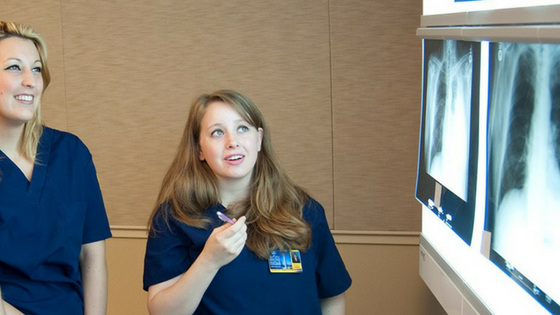
Respiratory Therapist
The Rose State Respiratory Therapist Program is a two-year course designed to prepare students to become certified, licensed practitioners in the field. The program accepts 24 students each year with classes starting in August.
“The program consists of one year of prerequisite courses and one year of professional studies,” Program Director Kathe Rowe says. “This works well for both the traditional student entering the program after high school, as well as someone with previous college credit or a degree.” For those who have already completed the general education and basic science pre-requisites, the professional studies consist of only three semesters. This means within one year of beginning the professional courses, students can graduate and begin working as a respiratory therapist.
Certification
Graduates of the program are eligible to take the credentialing exams administered by the National Board for Respiratory Care (NBRC) — the Therapist Multiple Choice (TMC) exam and Clinical Simulation exam (CSE). After passing both exams, students will be awarded the Registered Respiratory Therapist (RRT) credential.
“The practice of respiratory therapy in the state of Oklahoma requires a license,” Rowe says. “Passing the national board exam makes graduates eligible to apply for a state license.” To receive a license in Oklahoma, graduates must pass the NBRC TMC to obtain the Certified Respiratory Therapist (CRT), entry-level credential.
“Even before graduation, if a student has a job offer, the student can apply for a provisional license with the state medical board,” Rowe says. “This will allow part-time employment as a student, or a quick transition and orientation to the workplace as the graduate is scheduling a test date with the national board.”
Career Opportunities
Respiratory therapists can be employed in hospitals, nursing care facilities, clinics, physicians’ offices, companies providing emergency oxygen services, and home health care organizations. “The majority of jobs are in either in an acute- or long-term care hospitals,” Rowe says.
After some clinical experience, jobs can become available in home health, diagnostic labs, marketing and sales, education, and management. However, positions in education and management usually require a higher degree.
The BLS expects the number of registered respiratory therapists to increase by 23 percent by 2026 an increase of 30,500 jobs. The median salary for respiratory therapists in the U.S. is $59,710 or $28.71 per hour. In Oklahoma, the starting salary is $19 per hour.
For more information, contact Kathe Rowe at (405) 733-7571 or krowe@rose.edu.
Nursing Science
The Rose State Nursing Science Program prepares students to plan, provide, and evaluate comprehensive, competent nursing care while practicing legally, ethically, and safely.
“The Nursing Science Program at Rose State is a dynamic and innovative program for nursing education,” Director Rebekah Ray says. “The faculty is dedicated to ensuring a high-quality education for the students. To this end, they are constantly implementing new services, teaching techniques, and curriculum. The program also has an excellent reputation in the health care community and attracts applicants from around the state.”
The Nursing Science Program includes 69 credit hours of coursework including 34 credit hours of general education and support coursework and 35 credit hours of nursing coursework. Two program tracks exist within the Nursing Science Program, a Beginning Track for students with little to no healthcare experience and a Career Ladder Track for licensed practical nurses, paramedics, and some military medics looking to further their education.
Certification
The Nursing Science Program at Rose State is accredited by the Accreditation Commission for Education in Nursing (ACEN). Graduates of the program are eligible to apply to take the licensure exam, the National Council Licensure Examination-Registered Nurse (NCLEX-RN). Upon passing the exam, graduates are awarded a license to practice as a registered nurse.
“Graduates can now apply for and be awarded a multi-state license, which allows them to practice as a registered nurse in 30 different states,” Ray says.
Career Opportunities
“Registered Nursing is an exciting, challenging, and fulfilling career,” Ray says. “Registered nurses work in a variety of settings. Most are employed in acute care hospitals or medical centers. However, many opportunities exist outside this traditional work site. Private physician practices, clinics, surgery centers, health maintenance organizations, home health care agencies, and nursing homes are just a few of the many diverse locations.”
Nurses spend considerable time walking and standing. In facilities that provide 24-hour care, nurses commonly work nights, weekends, holidays and/or on-call hours.
There are currently almost 3 million registered nurses in the U.S., and the BLS expects that number to increase by 15 percent by 2026. The median salary for nurses in the U.S. is $70,000 or $33.65 per hour. In Oklahoma, the average salary ranges from $36,670 to $57,595.
For more information, contact Rebekah Ray at (405) 733-7546 or rray@rose.edu.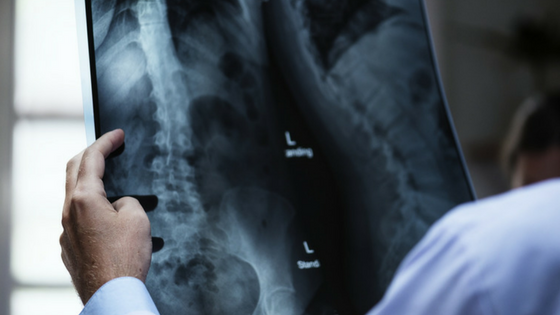
Radiologic Technology
The Radiologic Technology Program at Rose State is a two-year program designed to prepare students to enter the field of radiology. The program is accredited by the Joint Review Committee on Education in Radiologic Technology, and students must submit an ACT score from the last three years in order to be eligible for admission.
For the clinical rotation element of the degree program, students will work in radiology department of several hospitals and clinics in the Oklahoma City metro area including Integris Baptist Medical Center, Mercy Health Systems, Midwest Regional Medical Center, OU Medical Center, Saint Anthony Hospital, Integris Southwest Medical Center, and Norman Regional Medical Center.
Certification
To become a licensed radiologic technologist, students must graduate from an accredited program and pass the certification exam from the American Registry of Radiologic Technologists. Upon passing the exam, radiographers become certified radiologic technologists.
Career Opportunities
More than half of all radiographers are employed in hospitals. The remaining professionals are employed in health care facilities including specialized imaging centers, care clinics, and private physicians’ offices. Full-time radiographers generally work 40 hours per week, including evenings, weekends, and on-call hours.
According to the BLS, there are currently more than 240,000 radiologic technologists in the United States. That number is expected to increase by 13 percent, or 30,300 jobs, by 2026. The median salary for radiologic technologists is $60,070 or $28.88 per hour. In Oklahoma, starting salaries for radiographers range from $25 to $18.50 per hour.
For more information about the Radiologic Technology Program, contact (405) 733-7360.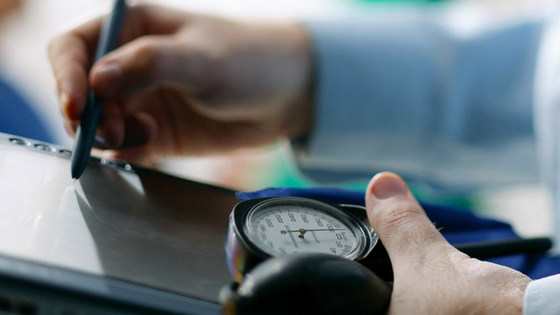
Health Information Technology (HIT)
The Health Information Technology (HIT) Program at Rose State is a two-year program designed to train students in the practice of acquiring, analyzing, and protecting medical information that is vital to providing quality patient care in a variety of settings.
Health information professionals are responsible for safeguarding data related to a person’s medical history, including the symptoms they’re experiencing, their diagnosis, procedures they undergo, and their outcomes. A health information professional may handle medical data such as health histories, lab results, clinical information (notes from health care providers), x-rays, and more. In addition, health information professionals are responsible for classifying medical diagnoses and treatments to ensure that they are standardized for clinical, financial (insurance), and legal use.
The HIT program at Rose State is accredited by the Commission on Accreditation for Health Informatics and Information Management Education (CAHIIM) and is only one of two associate degree programs in the state of Oklahoma that is CAHIIM-accredited. Graduates will receive an Associate in Applied Science Degree upon completion of the program.
Courses taken during the program will include medical terminology, anatomy and physiology, management, communication, health data requirements and standards, classification and coding systems, healthcare reimbursement methods, healthcare statistics, privacy and security of health information, and computer systems.
Certification
After completing the program, graduates are eligible to take the national certification examination through the American Health Information Management Association (AHIMA). In order to take the exam, individuals must have graduated from a CAHIIM-accredited program. When graduates pass the exam, they will become Registered Health Information Technicians (RHIT).
Career Opportunities
Health information technology is a great career choice for those interested in the medical field, but who do not want direct contact with patients. HIT professionals are often employed by hospitals, surgery centers, home health agencies, physician practices, insurance companies, governmental and regulatory entities, software, and other health care-related vendors.
The BLS estimates that there are currently 206,300 health information technicians in the U.S.—a number that is expected to increase by 13 percent by 2026. The median salary for health information technicians in 2017 was $39,180 or $18.83 per hour. In Oklahoma, starting salaries range from $30,000 to $34,000.
For more information, contact Linda Whaley at (405) 733-7578 or lwhaley@rose.edu.


